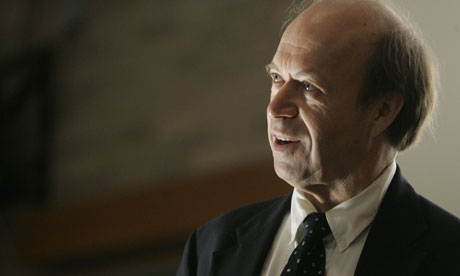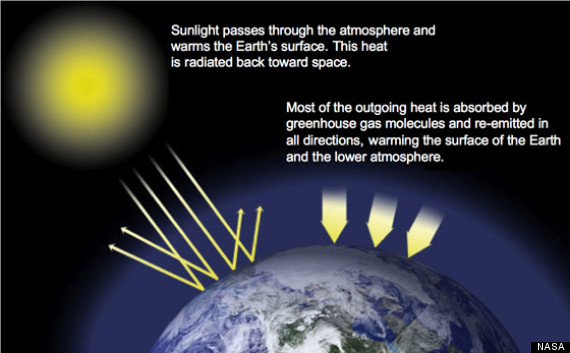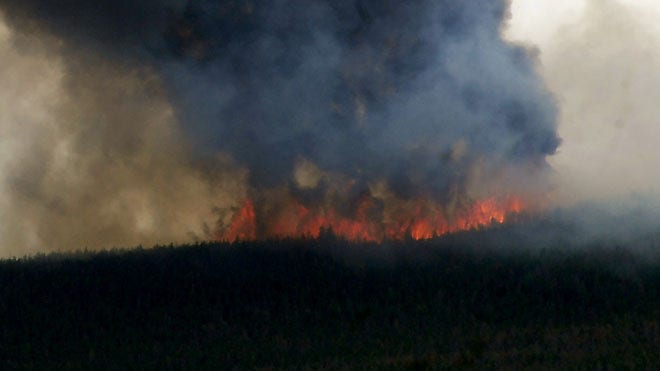May 31, 2012
Climate change itself is already in the process of definitively rebutting climate alarmists who think human use of fossil fuels is causing ultimately catastrophic global warming. That is because natural climate cycles have already turned from warming to cooling, global temperatures have already been declining for more than 10 years, and global temperatures will continue to decline for another two decades or more.
That is one of the most interesting conclusions to come out of the seventh International Climate Change Conference sponsored by the Heartland Institute, held last week in Chicago. I attended, and served as one of the speakers, talking about The Economic Implications of High Cost Energy.
The conference featured serious natural science, contrary to the self-interested political science you hear from government financed global warming alarmists seeking to justify widely expanded regulatory and taxation powers for government bodies, or government body wannabees, such as the United Nations. See for yourself, as the conference speeches are
online.
What you will see are calm, dispassionate presentations by serious, pedigreed scientists discussing and explaining reams of data. In sharp contrast to these climate realists, the climate alarmists have long admitted that they cannot defend their theory that humans are causing catastrophic global warming in public debate. With the conference presentations online, let’s see if the alarmists really do have any response.
The Heartland Institute has effectively become the international headquarters of the climate realists, an analog to the UN’s Intergovernmental Panel on Climate Change (IPCC). It has achieved that status through these international climate conferences, and the publication of its Climate Change Reconsidered volumes, produced in conjunction with the Nongovernmental International Panel on Climate Change (NIPCC).
Those Climate Change Reconsidered volumes are an equivalently thorough scientific rebuttal to the irregular Assessment Reports of the UN’s IPCC. You can ask any advocate of human caused catastrophic global warming what their response is to Climate Change Reconsidered. If they have none, they are not qualified to discuss the issue intelligently.
Check out the 20th century temperature record, and you will find that its up and down pattern does not follow the industrial revolution’s upward march of atmospheric carbon dioxide (CO2), which is the supposed central culprit for man caused global warming (and has been much, much higher in the past). It follows instead the up and down pattern of naturally caused climate cycles.
For example, temperatures dropped steadily from the late 1940s to the late 1970s. The popular press was even talking about a coming ice age. Ice ages have cyclically occurred roughly every 10,000 years, with a new one actually due around now.
In the late 1970s, the natural cycles turned warm and temperatures rose until the late 1990s, a trend that political and economic interests have tried to milk mercilessly to their advantage. The incorruptible satellite measured global atmospheric temperatures show less warming during this period than the heavily manipulated land surface temperatures.
Central to these natural cycles is the Pacific Decadal Oscillation (PDO). Every 25 to 30 years the oceans undergo a natural cycle where the colder water below churns to replace the warmer water at the surface, and that affects global temperatures by the fractions of a degree we have seen. The PDO was cold from the late 1940s to the late 1970s, and it was warm from the late 1970s to the late 1990s, similar to the Atlantic Multidecadal Oscillation (AMO).
In 2000, the UN’s IPCC predicted that global temperatures would rise by 1 degree Celsius by 2010. Was that based on climate science, or political science to scare the public into accepting costly anti-industrial regulations and taxes?
Don Easterbrook, Professor Emeritus of Geology at Western Washington University, knew the answer. He publicly predicted in 2000 that global temperatures would decline by 2010. He made that prediction because he knew the PDO had turned cold in 1999, something the political scientists at the UN’s IPCC did not know or did not think significant.
Well, the results are in, and the winner is….Don Easterbrook. Easterbrook also spoke at the Heartland conference, with a presentation entitled “Are Forecasts of a 20-Year Cooling Trend Credible?” Watch that online and you will see how scientists are supposed to talk: cool, rational, logical analysis of the data, and full explanation of it. All I ever see from the global warming alarmists, by contrast, is political public relations, personal attacks, ad hominem arguments, and name calling, combined with admissions that they can’t defend their views in public debate.
Easterbrook shows that by 2010 the 2000 prediction of the IPCC was wrong by well over a degree, and the gap was widening. That’s a big miss for a forecast just 10 years away, when the same folks expect us to take seriously their predictions for 100 years in the future. Howard Hayden, Professor of Physics Emeritus at the University of Connecticut showed in his presentation at the conference that based on the historical record a doubling of CO2 could be expected to produce a 2 degree C temperature increase. Such a doubling would take most of this century, and the temperature impact of increased concentrations of CO2 declines logarithmically. You can see Hayden’s presentation online as well.
Because PDO cycles last 25 to 30 years, Easterbrook expects the cooling trend to continue for another 2 decades or so. Easterbrook, in fact, documents 40 such alternating periods of warming and cooling over the past 500 years, with similar data going back 15,000 years. He further expects the flipping of the ADO to add to the current downward trend.
But that is not all. We are also currently experiencing a surprisingly long period with very low sunspot activity. That is associated in the earth’s history with even lower, colder temperatures. The pattern was seen during a period known as the Dalton Minimum from 1790 to 1830, which saw temperature readings decline by 2 degrees in a 20 year period, and the noted Year Without A Summer in 1816 (which may have had other contributing short term causes).
Even worse was the period known as the Maunder Minimum from 1645 to 1715, which saw only about 50 sunspots during one 30 year period within the cycle, compared to a typical 40,000 to 50,000 sunspots during such periods in modern times. The Maunder Minimum coincided with the coldest part of the Little Ice Age, which the earth suffered from about 1350 to 1850. The Maunder Minimum saw sharply reduced agricultural output, and widespread human suffering, disease and premature death.
Such impacts of the sun on the earth’s climate were discussed at the conference by astrophysicist and geoscientist Willie Soon, Nir J. Shaviv, of the Racah Institute of Physics in the Hebrew University of Jerusalem, and Sebastian Luning, co-author with leading German environmentalist Fritz Vahrenholt of The Cold Sun.
Easterbrook suggests that the outstanding question is only how cold this present cold cycle will get. Will it be modest like the cooling from the late 1940s to late 1970s? Or will the paucity of sunspots drive us all the way down to the Dalton Minimum, or even the Maunder Minimum? He says it is impossible to know now. But based on experience, he will probably know before the UN and its politicized IPCC.




 Reply With Quote
Reply With Quote By Jonathan Amos Science correspondent, BBC News
By Jonathan Amos Science correspondent, BBC News

 Prof Jim Hansen: 'We’re handing future generations a climate system which is potentially out of their control'. Photograph: Melanie Patterson/AP
Prof Jim Hansen: 'We’re handing future generations a climate system which is potentially out of their control'. Photograph: Melanie Patterson/AP NASA Administrator Charles Bolden
NASA Administrator Charles Bolden
 Play
Play
 Lawrence LeBlond for Redorbit.com
Lawrence LeBlond for Redorbit.com

 Three donors the latest in a rush of companies to distance themselves from Heartland after an ad campaign featuring Unabomber Ted Kaczynski. Photograph: The Heartland Institute
Three donors the latest in a rush of companies to distance themselves from Heartland after an ad campaign featuring Unabomber Ted Kaczynski. Photograph: The Heartland Institute It strengthens them, causing their anvil-shaped tops to spread out high in the atmosphere and capture heat, especially at night, says Jiwen Fan of the Department of Energy's Pacific Northwest National Laboratory.
It strengthens them, causing their anvil-shaped tops to spread out high in the atmosphere and capture heat, especially at night, says Jiwen Fan of the Department of Energy's Pacific Northwest National Laboratory. Although the methane is most likely naturally occurring, ice melts potentially caused by climate change have allowed it to escape into the atmosphere.
Although the methane is most likely naturally occurring, ice melts potentially caused by climate change have allowed it to escape into the atmosphere.






Bookmarks